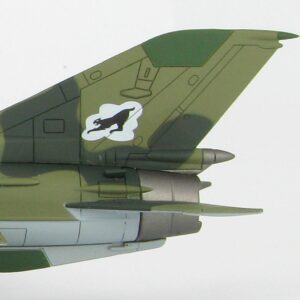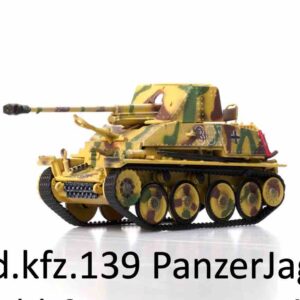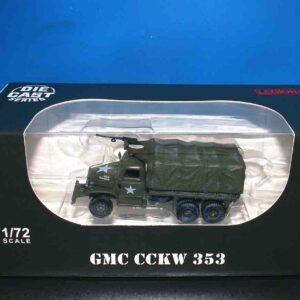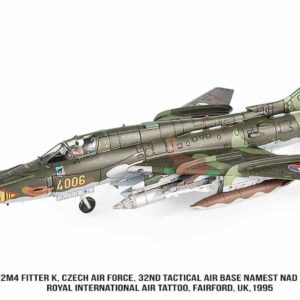Popis
-sběratelský model letadla Pe-2 Petlyakov délka modelu 10,0cm -provedení: kovový model s plastovými částmi
Petlyakov Pe-2
V létě roku 1938 dostala konstrukční kancelář V. M. Petljakova požadavek na konstrukci dvoumotorového rychlého výškového stíhacího letounu. K zalétání dvoumístného prototypu Petljakov VI-100 došlo 22. prosince 1939 pilotem P. M. Stěfanovským, avšak zkoušky ještě pokračovaly do května roku následujícího. Motory byly řadové dvanáctiválce V. K. Klimova M-105 po 772 kW s turbokompresory TK-3. Letoun měl zabudovány čtyři pevné kanóny ŠVAK ráže 20 mm, pozorovatel/radista ovládal jeden pohyblivý kulomet ŠKAS ráže 7,62 mm. Bylo však rozhodnuto další práce zastavit a na základě vyhodnocení bojů Luftwaffe v Polsku byl zadán požadavek na přeměnu stroje na střemhlavý bombardér.
The Petlyakov Pe-2 (Russian: Петляков Пе-2) was a Soviet twin-engined dive bomber used during World War II. It was regarded as one of the best front-line medium bomber of the war and it was also successful in the roles of heavy and night fighter (Pe-3 variant) as well as of reconnaissance aircraft. It was similar in many respects to the wooden British de Havilland Mosquito. Pe-2s were manufactured in greater numbers (11,430 built) during the war than any other twin-engined combat aircraft except for the German Junkers Ju 88 and British Vickers Wellington.The Pe-2 was fast, maneuverable and durable. Several Communist nations flew the type after the war, when it became known by the NATO reporting name Buck. Six captured Pe-2s were also transferred from the Germans to the Finnish Air Force during the Continuation War, with the serial code PE- and the unofficial nickname Pekka-Eemeli.
| Role | Dive bomber |
|---|---|
| National origin | Soviet Union |
| Manufacturer | Plant No.22 (Kazan), Plant No.39 (Moscow), Plant No.124 (Kazan), Plant No.125 (Irkutsk) |
| Designer | V.M. Petlyakov Design Bureau |
| First flight | 22 December 1939 (VI-100) |
| Introduction | March 1941 |
| Retired | 1951 (Soviet Air Force), 1957 (Polish Air Force) |
| Primary users | Soviet Air Force Polish Air Force, Czechoslovakian Air Force, Bulgarian Air Force |
| Produced | December 1940 – December 1945 |
| Number built | 11,070 (+ 360 Pe-3) |
| Variants | Petlyakov Pe-3 |
General characteristics
- Crew: Three – pilot, navigator, gunner
- Length: 12.66 m (41 ft 6 in)
- Wingspan: 17.16 m (56 ft 3 in)
- Height: 3.5 m (11 ft 6 in)
- Wing area: 40.5 m² (436 ft²)
- Empty weight: 5,875 kg (12,952 lb)
- Loaded weight: 7,563 kg (16,639 lb)
- Max. takeoff weight: 8,495 kg (18,728 lb)
- Powerplant: 2 × Klimov M-105 PF liquid-cooled V-12, 903 kW (1,210 hp) each
Performance
- Maximum speed: 580 km/h (360 mph)
- Range: 1,160 km (721 miles)
- Service ceiling: 8,800 m (28,870 ft)
- Rate of climb: 7.2 m/s (1,410 ft/min)
- Wing loading: 186 kg/m² (38 lb/ft²)
- Power/mass: 250 W/kg (0.15 hp/lb)
Armament
- Guns:
- 2 7.62 mm (0.3 in) fixed ShKAS machine guns in the nose, one replaced by a 12.7 mm (0.5 in) Berezin UB on later versions.
- 2 rearward firing 7.62 mm (0.3 in) ShKAS machine guns.
- From the middle of 1942 defensive armament included 1 Berezin UB machine gun in the upper bombardier’s turret, 1 Berezin UB in gunner’s ventral hatch and 1 ShKAS which could be fired by a gunner from port, starboard or upper mountings
- Some planes were also equipped with a DAG-10 launcher, firing AG-2 parachute timed grenades.
- Bombs: 1,600 kg (3,520 lb) of bombs
Další informace
| Výrobce | |
|---|---|
| Dostupnost | Skladem |







